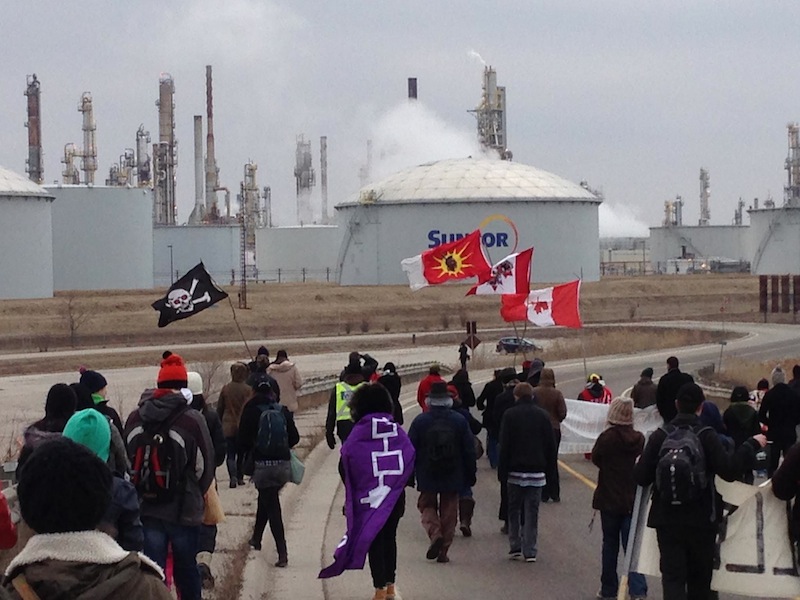Close to 100 people gathered in Aamjiwnaang First Nation, located inside of Sarnia and close to Lake Huron, on Friday to take part in the Ultimate Walking Toxic Tour of Canada’s Chemical Valley. The toxic tour stopped at several of the 63 petrochemical facilities that surround Aamjiwnaang First Nation. The tour, which kicked off a weekend of strategy meetings on Line 9, highlighted the pollution created by the petrochemical industry and the right to breathe clean air.
Line 9 is a pipeline that currently runs from Sarnia to Westover. Enbridge wants to reverse the flow so that oil can flow from Alberta to eastern Canada. Communities have raised concerns including the impacts on indigenous communities and municipalities, the potential for spills and how that would impact drinking water and the rights of indigenous communities to free, prior and informed consent of this project.
The toxic tour, which was the first walking toxic tour, began with an opening ceremony in Rainbow Park, and community activists, environmental groups and various organizations stopped at Imperial Oil’s facility and took a moment of silence for victims of Chemical Valley along the route. Mark Calzavara, Ontario Regional Organizer and I joined the tour and took part in the picnic held on the road outside of the Suncor facility to highlight people’s inability to no longer have picnics in the region. Organizers held a die-in outside of the Shell facility.

In the evening, Wilson Plain gave a moving account that included the history and context of the area. Next Heather Milton-Lightning from the Indigenous Environmental Network gave background on tar sands development, their impacts on communities and what communities have been doing to fight their expansion. Bob Lovelace, professor from Queens University and former chief of Ardoch First Nation also spoke.
Over the remainder of the weekend, Mark and I joined approximately 50 people in the strategy sessions on Line 9. The group included activists from Aamjiwnaang First Nation, Toronto, Durham, Hamilton, Kingston and Guelph as well as environmental and social justice organizations on Line 9.
We had breakout sessions on lobbying, research on legal and other aspects, raising awareness and other tactics and approaches. Vanessa Gray closed the inspiring weekend by telling her personal story of living in Chemical Valley, plagued by illness, the legacy of residential schools and deaths of loved ones. While tragic to hear, it solidified our resolve to support her and others fight for their right to clean air and clean water.

To read more about Chemical Valley and the impacts on community members of Aamjiwnaang First Nation, click here.



